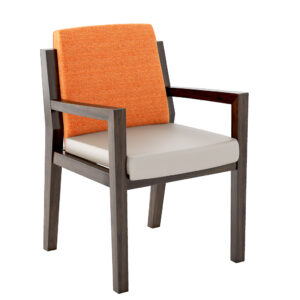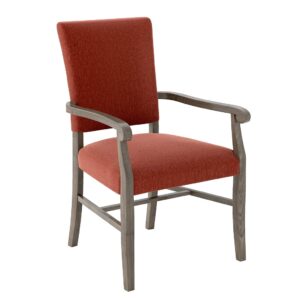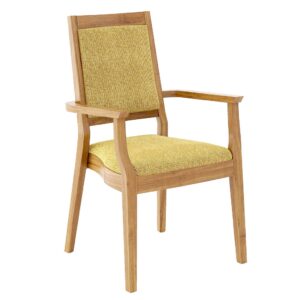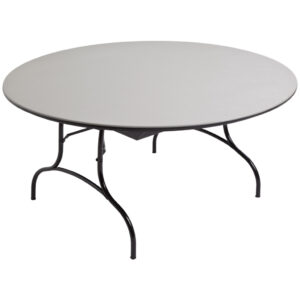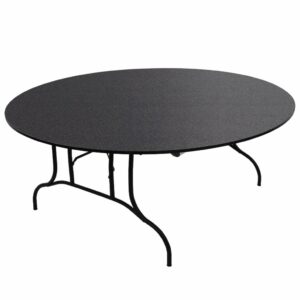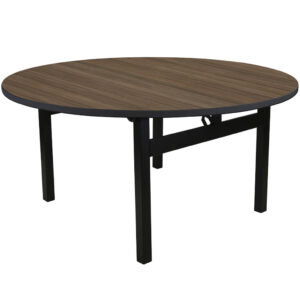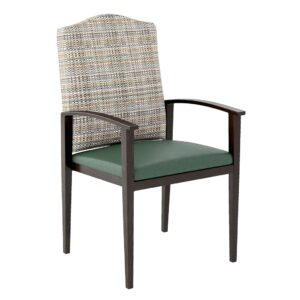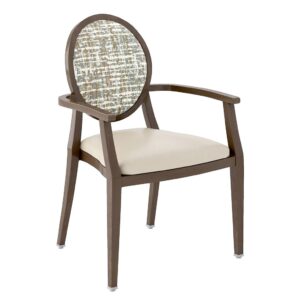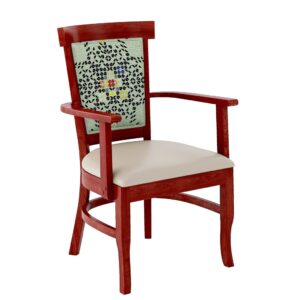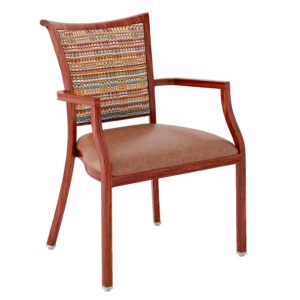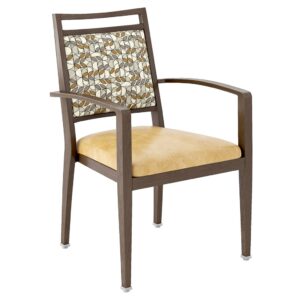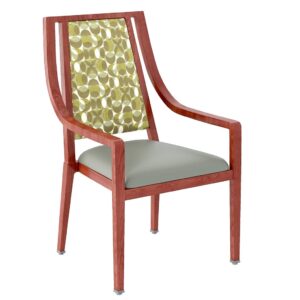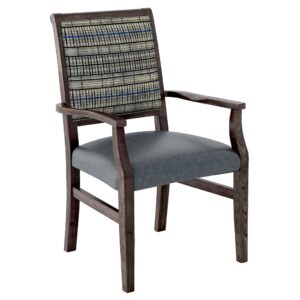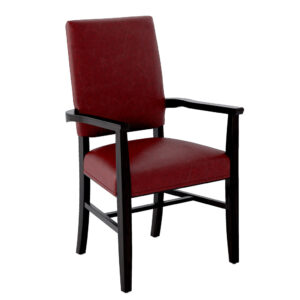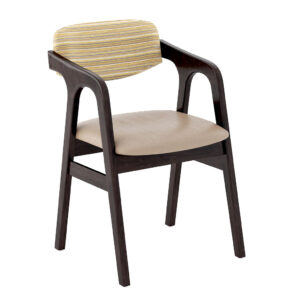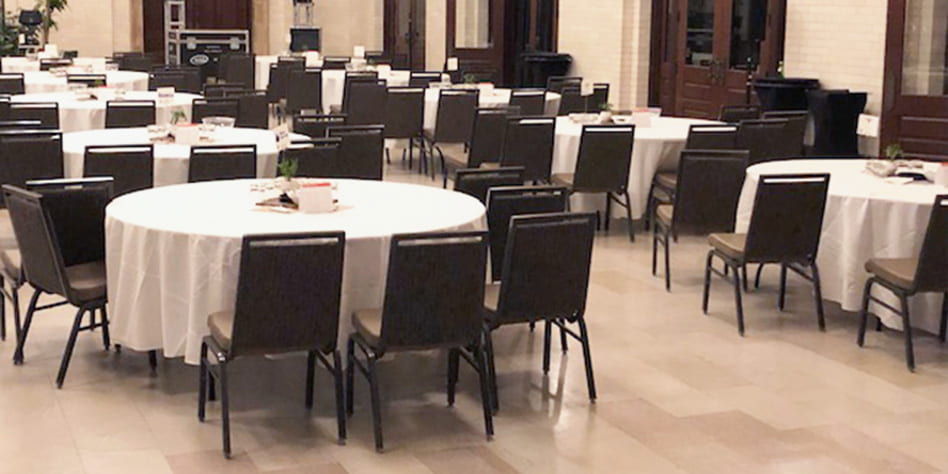
There are several things to consider when selecting the safest and most comfortable furniture for senior living environments. As they age, many seniors experience some degree of aches, pains, sore joints, muscle weakness, and overall hampered mobility. Accessible seating will promote independence and comfort through old age. On the other hand, the wrong chairs can be so hazardous and uncomfortable that seniors give up trying to sit and stand independently.
The following guidelines can help you choose safe, comfortable chairs for seniors, whether you manage a senior living facility or you’re upgrading your home to be more accessible.
1. Armrests for Safety and Support
For seniors with mobility issues, armrests are a critical feature that’s needed in all seating, whether the chair will be at a dining table, in a living area, or in front of a TV. Armrests offer essential support for getting in and out of a chair, helping residents maintain their independence. The height of the armrests is just as important as their presence. If they are too low, armrests won’t provide the support needed to rise fully from the chair; if they are too high, they may make getting in and out of the chair more difficult.
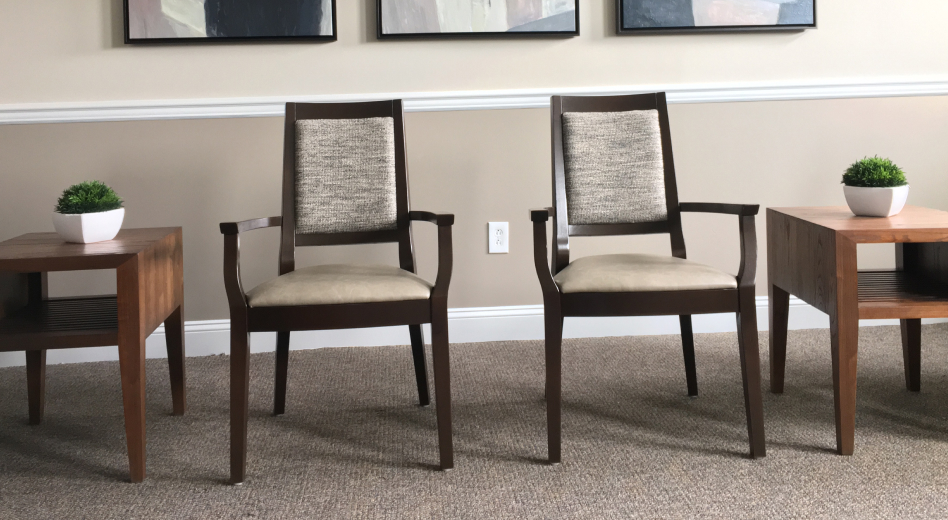
When choosing chairs, look for ones with adjustable armrests or those that fall within a standard height range, ideally around 9-10 inches from the seat. This ensures that the armrests can comfortably support the average senior resident’s needs without compromising accessibility.
In common areas where residents of different heights mingle, choose multiple chair styles with differing heights for living areas, so that all residents can comfortably enjoy these areas. The chairs with lower armrests will work well for shorter people, and the higher armrests will be needed for taller people.
Popular Armchairs for Senior Living
2. Offer More Chairs than Couches
Sofas, couches, and benches usually have a single, shared seating surface and may lack armrests on both sides. For seniors with limited mobility, couches can be difficult to get into and out of. Individual chairs with armrests offer the most support and safety when standing up or sitting down. Having armrests on both sides of the chair allows seniors to use their arms for leverage, making the process of standing up or sitting down much easier and reducing the risk of falls.

The armrests act as critical support structures, offering a steady point of contact that helps seniors lift themselves or steady their balance. This is especially important for those who may have limited strength or range of motion in their legs or core. When sitting down, seniors can gently lower themselves with the assistance of the armrests. Similarly, when standing up, the armrests provide a point of stability to push against, reducing strain on the body and preventing sudden, jerky movements that could lead to muscle pain, injuries, and falls.
However, this doesn’t mean that senior living centers should not have any couches. Many residents will be at ease sitting on couches, and so will their friends and family who come to visit. Placing a few couches and sofas in living areas will enhance the home-like feel and encourage friendships between residents.
3. Select Tables that Accommodate Wheelchairs
Choosing the right dining table height for senior living centers is a critical step in creating an inclusive and welcoming environment for residents who use wheelchairs. Proper table design ensures not only functionality but also comfort and dignity during mealtimes. By understanding ADA accessibility standards and practical considerations, senior living centers can enhance the dining experience for all residents.

The Americans with Disabilities Act (ADA) provides clear guidelines for wheelchair-accessible dining tables. According to ADA standards, tables must have a minimum height of 28 inches (71.1 cm) and a maximum height of 34 inches (86.3 cm) to allow for sufficient leg clearance for individuals in wheelchairs. Additionally, the space beneath the table should be at least 27 inches high, 30 inches wide, and 19 inches deep to ensure that wheelchairs can fit comfortably. Adhering to these measurements ensures compliance with federal regulations and promotes accessibility for all residents.
Table placement and pathways are also important when considering accessibility standards. Ensure that wheelchairs have a clear pathway at least 36 inches wide (91.4 cm) between tables and to the exit. Consider leaving extra space in some areas for residents with walkers, canes, and other mobility assistance devices.
While meeting ADA standards is essential, it is equally important to consider the comfort of residents. Wheelchair users have diverse needs based on the type and size of their wheelchairs. Adjustable height tables can be an excellent option for accommodating various wheelchair dimensions and individual sizes and heights. Furthermore, tables with rounded edges and sturdy, unobtrusive bases help prevent accidents and make it easier for residents to maneuver their chairs without difficulty.
Popular Dining & Activity Tables for Senior Living
4. Seat Height: Get a Fit for Everyone
Every resident is different, and the ideal seat height can vary from person to person depending on their height, weight, health conditions, and mobility. That means that you’ll need several chair styles to accommodate everyone comfortably.
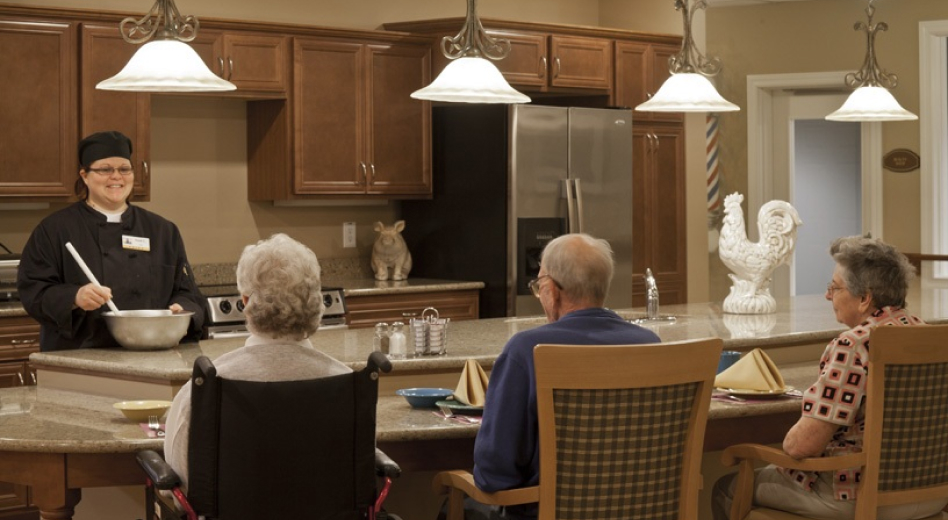
A seat that’s too low can make standing up and sitting down difficult because it will put too much pressure on the knees, back, and hips. Seniors who have joint pain will not be able to get into and out of low chairs without assistance. Low-height chairs also pose a fall risk for the elderly.
A seat that’s too high (judged by being so high that the feet dangle) will cause discomfort during long periods of sitting. Seats that are too high can also make it necessary to slide forward when rising, which can be difficult (or even impossible) for individuals with back or hip pain. Ideally, the height of the chair should allow residents to sit with their feet flat on the floor and their knees at a 90-degree angle.
- For most individuals, an ideal seat height will be somewhere between 17–20 inches (43.1 cm–50.8 cm).
- For taller people and for those who have a difficult time rising from a seat, a slightly higher height of 21–22 inches (53.3 cm–55.8 cm) can be helpful.
- People with hip and knee problems may benefit from an even taller seat height of 25–27 inches (63.5 cm–68.5 cm), provided the chair is sturdy, tip-proof, and dependable.
To keep everyone comfortable, the best senior living centers will have chairs of varying seat heights and chair styles to accommodate different residents. Consider a mix of chair heights, armrest heights, and seat depths to serve seniors of various heights and mobility levels.
Choose a Variety of Chair Heights for Greater Comfort
5. Durable, Comfortable Fabrics
When it comes to upholstery, comfort is just the beginning. The fabric you choose needs to be durable, easy to clean, and resistant to stains — all while maintaining a soft, comfortable feel. Many commercial-grade fabrics can be scratchy and irritating to delicate skin, so make sure you get samples of fabrics before ordering furniture for your senior living facility. Many senior living centers opt for washable, antimicrobial fabrics that can stand up to the daily wear and tear of everyday use.
Look for fabrics that are moisture-wicking, breathable, and easy to spot-clean or wash. Faux leather and high-performance microfiber are popular options but be sure to choose something that fits the aesthetic of your space while also being functional. It’s important to make sure that the fabric isn’t slippery because a slick chair seat can create a slip hazard.
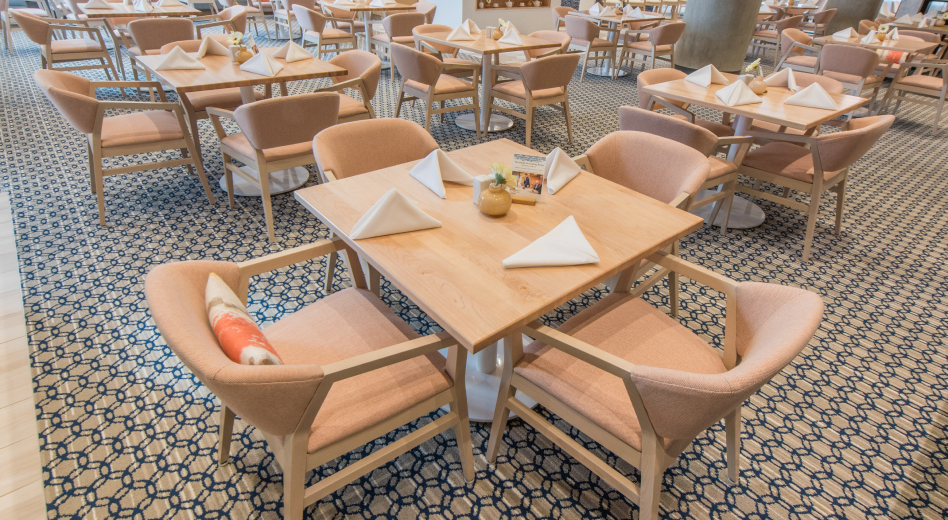
Consider the climate when selecting fabrics. For example, climates with damp, cold winters may want to avoid fabrics like faux leather (or vinyl), which is cool to the touch and can make residents feel colder during winter. Comfortable upholstery fabrics for cold areas include rayon, microfiber, performance fabrics, and polyester blends. Cozy-feeling fabrics like velvet (or velour), chenille, and wool can also help people feel warm.
If you live in a place with hot, humid conditions, you will want to avoid fabrics that are prone to mold and mildew, particularly in rooms with windows open. Breathability is also key; fabrics like vinyl that trap heat against the body can make people feel sweaty and uncomfortable. The best choices for a humid climate are fabrics that feel cool to the touch and don’t absorb heat. Some great examples include olefin, cotton, linen, and some performance fabrics.
Selecting the Ideal Chair Frames
The frame of a chair is where durability meets design. For high-traffic areas like dining rooms or lounges, it’s essential to choose a frame material that can handle daily use without showing wear too quickly. It’s also important to get some chairs designed for bariatric use, which is generally defined as being for individuals who weigh more than 350 pounds (158.7 kg).
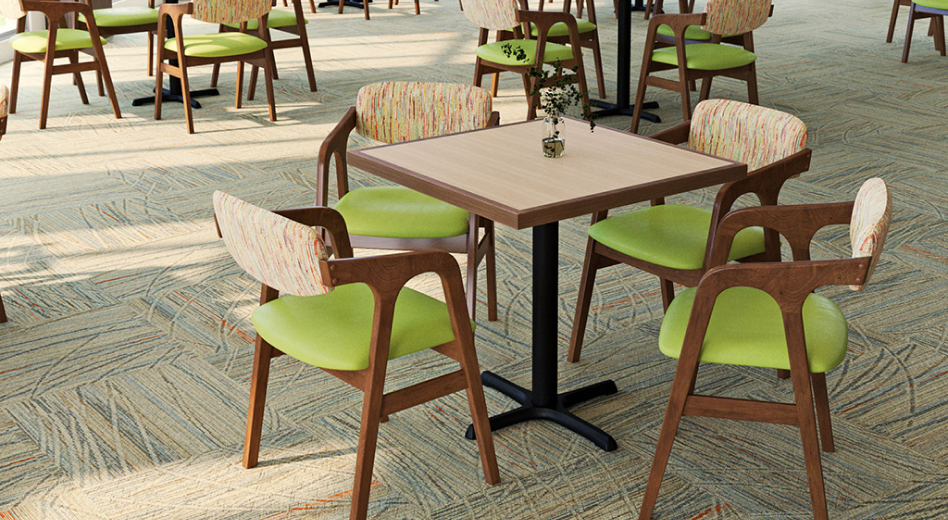
The best frame materials for commercial chairs in senior living centers will be made of natural wood or faux wood (which is usually a welded metal frame with a durable painted finish). Both of these materials are sturdy and easy to maintain.
Faux wood chair frames offer the look of wood but with the added benefit of being lighter and less prone to damage from moisture or spills. If your residents will be pulling chairs out from a table, faux wood can be better because of its lighter weight. Make sure metal chairs are expertly welded and that the frame is finished with powder coating, which makes it resistant to rust and moisture damage.
Faux Wood Chairs for Senior Living
Real wood chair frames are beautiful and sturdy and can last for decades if they are quality-made and cared for properly. Holsag by MityLite wooden chairs are made of European Beechwood, a high-quality hardwood, with mortise and tenon joints. All chairs feature a 9-step finishing process to ensure that the furniture is durable enough for commercial environments. Wooden chairs with upholstered seats and backrests are ideal for bedrooms, lobbies, activity rooms, and personal living areas in senior care facilities.
Real Wood Chairs for Senior Living
Additional Features to Consider
Beyond the basics, you may also want to consider other chair features that can enhance the overall experience of your residents.
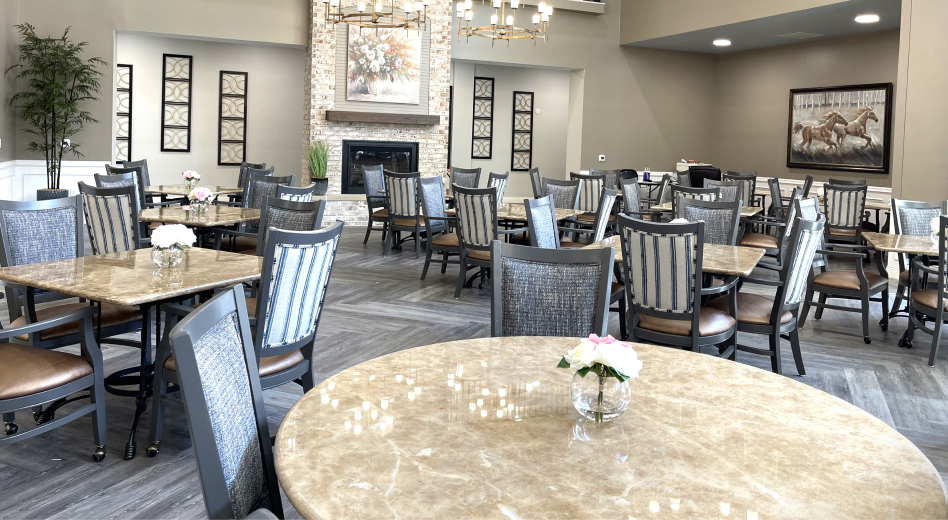
- Casters or in-line wheels for easy movement in dining areas.
- Non-slip seat cushions for added comfort and safety.
- Ergonomic chair backs that provide proper lumbar support to prevent back pain.
- Chairs with a lift feature can help residents stand up from the chair (they can be motorized or spring-loaded).
- A fully upholstered rocker or recliner is a cozy option for in-room relaxation, but it will need to be sized to the individual for optimal comfort. If a recliner is fitted properly, when a person is seated in a recliner with the footrest fully extended, the heels of the feet will rest just off the edge of the footrest.
Abschließende Gedanken
Selecting accessible seating for senior living centers is an important decision that impacts both comfort and safety. By paying attention to details like armrest height, seating selection, seat height, fabric type, and chair frame material, you can create an environment that supports your residents’ independence and well-being.
Ultimately, the best chairs for senior living will depend on your specific needs, but by keeping these guidelines in mind, you’ll be well on your way to creating comfortable, safe spaces where seniors can enjoy their daily activities.

Shopping for Senior Living Furniture? Contact one of our experts.
